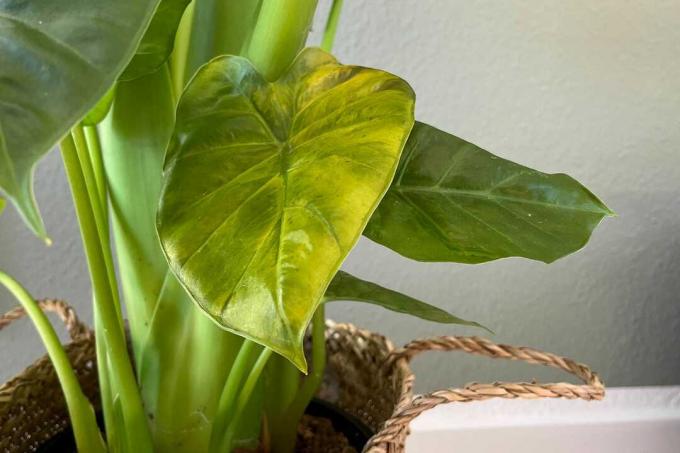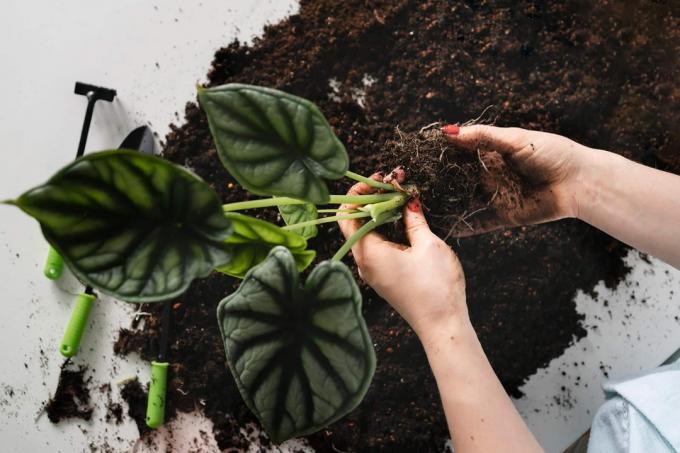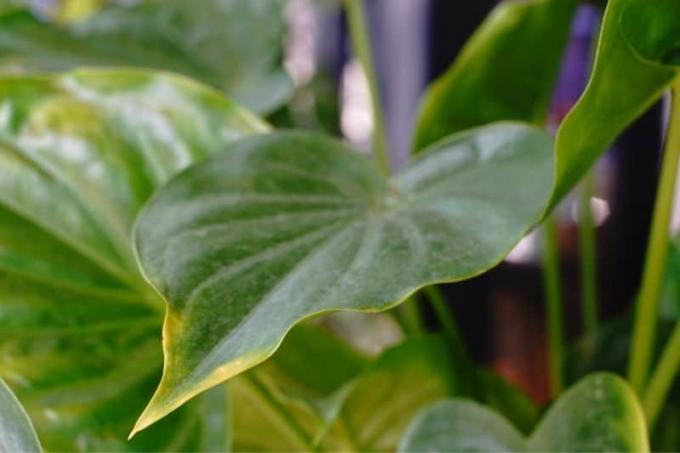
The elephant ear is a plant that produces beautiful decorative large leaves. But what can be the reasons behind it if the leaves of the Alocasia suddenly turn yellow? The following article sheds light on this.
In a nutshell
- Yellow leaves are usually the result of poor care
- Alocasia requires more maintenance than other green plants
- Waterlogging is one of the most common reasons for yellow leaves
- Nutrient deficiencies due to various care mistakes
- high humidity for green leaves
Table of contents
- Causes of yellow leaves
- Location
- waterlogging
- substrate
- Not enough water
- Fertilize
- frequently asked Questions
Causes of yellow leaves
If the elephant ear suddenly develops yellow leaf tips and yellow spots on the leaves and then after a short time this If you let the entire leaf of the Alocasia turn yellow, then this is one of various care mistakes that will be corrected as soon as possible should. Because Alocasia does not forgive mistakes in care so quickly and is relatively susceptible to any form of mistakes:
- wrong location
- too much water
- not enough water
- nutrient deficiency
- wrong substrate

A notice: Any yellow leaves that form on the Alocasia should be removed from the plant immediately to prevent the leaf axis from rotting.
Location
The elephant ear needs the right location so that it does not get yellow leaves. When choosing a location, there are a number of things to consider. If the location was not ideally chosen, then a new one must be found:
- bright room ideal for location
- Windows should face south
- do not let it be exposed to direct sun at noon
- otherwise the leaves could suffer from sunburn
- ideally use a plant lamp in winter
- Room temperature between 20° and 25° Celsius
- cold temperatures can cause yellow leaves
- do not expose to drafts
- the ideal distance to windows and heating is 1.5 to two meters
A notice: Even in winter, the temperatures at the site must not fall below 15° Celsius. Because the plants react strongly to low temperatures.
waterlogging
Waterlogging can occur in a variety of ways and is a serious condition. Because the Alocasia not only gets yellow leaves from this, the entire decorative plant can then quickly die off. So it's not always because it was watered too often, even a dense soil absorbs the water and waterlogging occurs.

Instructionsto repot
- Carefully remove the plant from the pot
- remove all soil from roots
- cut off damaged roots with clean scissors
- Allow the root ball to dry thoroughly
- use fresh potting soil
- mix with sand and gravel for permeability
- Wash the pot well or choose a new container
- Lay drainage over drainage hole
- Fill in the soil and insert the plant
Only start again after several days with moderate watering.
A notice: In some communities the tap water is too hard to use as irrigation water, this can also be a cause of the yellow leaves on the plant. Rainwater is the better option here, otherwise you should filter the tap water before watering.
substrate
The choice of the right soil is also very important when the elephant ear is cultivated in a pot for the first time. Because if the soil is too firm, waterlogging quickly occurs. It should also contain enough nutrients. If the substrate is the cause of the yellow leaves, it must be repotted as described under waterlogging.

Tip: A suitable soil pH for the Alocasia is between 5.5 and 6.5 pH.
Not enough water
If the elephant ear has been too dry for a long time, the leaves have turned yellow as a result formed, then it has to be washed well and then watered again regularly but not excessively become.
Fertilize
If the elephant ear does not get enough nutrients due to insufficient fertilization, then this is a cause of yellow leaves that can be quickly remedied:
- immediately supply liquid fertilizer for green plants via the irrigation water
- fertilize every two weeks
- let the dose be a little lower at the beginning
- Plant should be able to get used to fertilizer application after nutrient deficiency

Tip: If the plant recovers and shows no more yellow leaves, it can be supplied with a normal fertilization schedule after three months. For this purpose, attention should be paid to the manufacturer's information on the fertilizers used.
frequently asked Questions
So that the green houseplant does not get yellow leaves, it not only needs enough nutrients in the substrate, but also enough space for their roots to absorb the nutrients can. For this reason, it should be placed in a larger container with fresh new soil at least every two years.
Many green plants require higher humidity, especially in winter when there is less ventilation and the heating causes dry air. Electric humidifiers are commercially available. But a bowl of water placed right next to the plant is also sufficient. An indoor fountain on a windowsill can also be particularly decorative. In between, you can regularly spray the leaves with water.
When plant roots sit in water for too long, they begin to rot. Then the roots are no longer able to absorb enough water and nutrients from the soil. The superficial plant, stems and leaves then also get no more water and no nutrients because these are no longer passed on. The leaves turn yellow first, before the entire plant dies off after a while.



